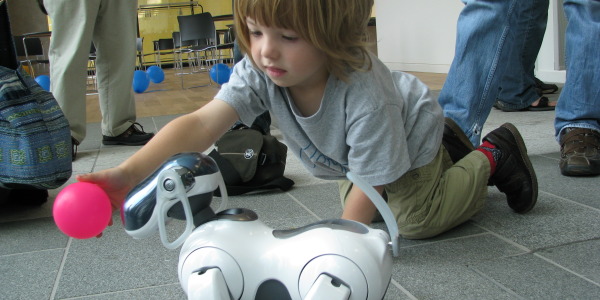In the past, robots and machines could only do the things they were specifically programmed to to. Move from point A to point B. Repeat. Machine learning enables robots to learn from previous experiences. People typically talk about machine learning in the context of artificial intelligence and automated systems — the software side of things. Could machine learning be used to teach robots to perform new physical tasks and adjust to their environments?
Robots are binary
Even though machines can outlift any man and crunch numbers faster than any math wiz, young children still outshine our most advanced robots at carrying out basic tasks and responding to new situations. Robots have a very strict set of rules that they follow. While they excel at a specific task within a controlled environment, they struggle at multitasking in unpredictable settings.
Systems that use machine learning build and improve upon gained information from repeating processes. Deepfakes are a scary example of machine learning in action, but even algorithms from streaming services that offer suggestions based on your preferences count as machine learning.
Current machine learning methods are still fairly limited. They are very structured and don’t invite sophisticated, or even adaptive learning. You have to establish parameters or guidelines, but in doing so you put the system in a box.
What we can learn from children
A Wired article written by Matt Simon explores the idea that machines can learn to navigate the physical world and carry out tasks in the same way the people do: growing up.
Humans learn, grow, and develop through play and guidance during childhood. We make mistakes, learn, and a adjust. We make connections, identify patterns, and see what works and what doesn’t. Our learning builds upon everything else we’ve learned. People don’t learn how to use a spoon and tuck that into the compartment used exclusively for consuming food. There’s no eating mode — we make use of fine motor skills in every area where it applies.
Alison Gopnik, a psychologist at UC Berkeley, suggests that robots need “childhoods”. Gopnik says, “What you need is kind of a little, helpless, not-very-strong robot that can’t break things very much, and it’s actually being taken care of by somebody else. And then have that turn into a system that is capable of actually going out in the world and doing things.”
According to Gopnik, “play without a real purpose” can equip robots to deal with uncertainty and variables in a way that is less robot and more human. There’s at least one big difference: humans are living, breathing, organic beings with millions of years of evolution behind the wheel, whereas robots are just things we’ve made. Teaching robots through trial and error and a simulated “childhood” is an interesting idea, but we will have to see if it actually translates.
Call 479-422-0390 for Indramat support
You’re probably more concerned with fixing your error codes than raising robot children. Call us for immediate service, support, and emergency repair for Indramat systems.
